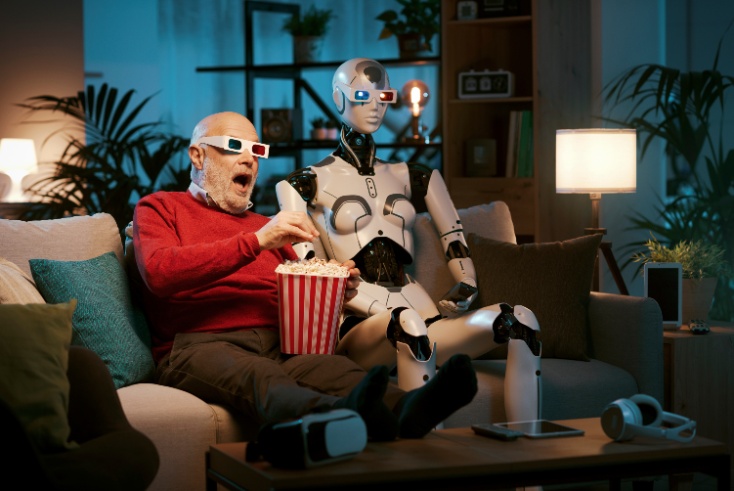3 hurdles Sky and ITV must overcome when pushing contextual ads

Opinion: 100% Media 0% Nonsense
Are humans or AI smart enough to do contextual targeting well? ITV and Sky certainly hope so, judging from their advertising upfronts.
What’s the one big takeaway from ITV and Sky’s advertising upfronts this year?
Contextual ads are coming.
Each of the UK’s biggest TV ads sellers are proposing to let advertisers buy video-on-demand (VOD) spots based on what the content is within the programme, rather than what the show or film’s genre is. That means a supermarket could choose to buy against any programme where someone is cooking, or a sportswear brand could filter for any shows in which a character is playing sport.
It sounds like exactly the sort of thing media owners should be doing to capitalise on AI while aiming to serve “addressable” ads without being creepy about audience tracking.
There’s just one issue that may make contextual ads a tough sell for media owners.
Actually, let’s make that three issues…
Tag, you’re it… or are you?
Sorting our lives into discrete categories is difficult.
And then bucketing the content we watch on TV, in which our lives and fantasies are played out on screen, can be even more challenging. In fact, what makes some of the best entertainment novel is that they are playful with categories and defy expectations.
This means that, to create meaningful categories against which advertisers can target, humans are going to have to be involved in the tagging. That’s quite a big ask when you consider that, in its upfronts on Friday, Sky Media revealed that over 5,000 pieces of video-on-demand (VOD) content have been scanned and tagged. If not humans, an AI program or some other automated process has to diligently carry out the tagging.
Sky to launch contextual targeting ads and beef up viewing panel
ITV’s sales chief Kelly Williams said a similar thing last month: “[W]e probably have about, I don’t know, 2,000 hours of cookery content to export. We probably have 200,000 moments when cooking happens, so we can really create very targeted contextual moments.”
The question then becomes: how much is a broadcaster willing to trust an AI to decipher what’s really going on in a video, e.g. is someone really “cooking” in the kitchen or doing something else entirely in a room that looks like a kitchen?
That’s because “context” is much more than what a character says or does onscreen.
If Sky and ITV, which both talked about this feature in their upfronts in recent weeks, has cracked this then they should be shouting about it a lot more.
There are too many categories
So that’s a supply issue, but how much will advertisers demand in terms of targeting against different types of content shown on screen?
When I mentioned Sky Media’s “5,000” tagged pieces (above), I missed out the bit where it said that these pieces had been “scanned and tagged against the IAB content taxonomy”.
If you actually look at this taxonomy, there are a lot of different categories. 704, in fact.
That’s too many.
It’s too many because, as big as TV is, its audiences are simply not large enough to fill this many buckets.
Let’s assume the Pareto principle applies and say that 80% of TV’s ad sales come from 20% of its customers: 20% of 704 is just over 140. Are TV’s advertisers really so wide-ranging and diverse as to be attracted to 140 different types of content within programmes? Or is this a strategy purely focused on growing the 20% of brands who don’t spend very much on TV?
In other words, it’s not clear from these announcements whether “contextual ads” is part of a strategy to squeeze more revenue from big advertisers or grow the “long-tail” smaller brands, which are typically regional and/or smaller businesses.
In either case, it doesn’t seem obvious what the demand looks like for this.
What’s it going to cost?
And then there’s the thing we get when supply and demand come together. What’s the price?
The challenge with any targeting solution is that it assumes advertisers are interested in “performance,” i.e. how many people are visiting my website or buying my stuff as a result of showing this ad, at this time, to these particular people. It completely ignores the power of brand-building, which is the bedrock of what the advertising effectiveness people tell us is what really moves the sales needle.
Palooza review: ITV puts commercial ‘pole position’ in tough market
Forget about what people want to buy right now, think about what most people will want to buy in their lifetimes as their circumstances and tastes change. Peter Field, who is speaking at our Future of TV Advertising Conference tomorrow, reminded us of just that in our podcast conversation last week.
Of course, Sainsbury’s or Tesco can still do the mass-reach, brand-building ads on linear and VOD in addition to buying some spots using contextual targeting to promote short-term offers or other performance-motivated marketing goals. But if they’re only buying against context for the short-term, and targeting small numbers of people, that could be quite expensive.
And the more expensive something is, the more you want a guarantee that it’s going to work. And that is what kills a marketer’s appetite for risk.
Then we’re back to how effective these context categories are — how many humans are involved in the tagging, versus how good is your AI at tagging, will again become the key question.
What advertising ‘context’ needs next
Sky, in particular, is about to mark 10 years since the launch of Adsmart. It feels like addressable advertising is still in its infancy and yet Sky’s sales arm Sky Media pioneered this in the UK a decade ago.
So what about the next decade?
Along with ITV, Sky should be applauded for developing ad formats that leverage TV’s superpower: showing content created by a talented creative team, often fronted by household names, for a big, immersive screen that sits within people’s homes. It’s a shame that we don’t hear the same innovation focus coming out of Channel 4, which has been more vocal of late talking about having to borrow in a tough ad market.
Yes the market is tough, as this week’s global adspend reports are reminding us. Media, generally, needs to better monetise its content and stop relying on following audiences around the internet in order to bombard them with ads. The internet ad boom of last decade was fuelled by what Shoshana Zuboff calls “surveillance capitalism”.
But are humans or AI smart enough to do contextual targeting well?
The answer to this could well define the success of online advertising, TV included, for the next decade.
 Omar Oakes is editor-in-chief of The Media Leader and leads the publication’s TV coverage.
Omar Oakes is editor-in-chief of The Media Leader and leads the publication’s TV coverage.
‘100% Media 0% Nonsense’ is a weekly column about the state of media and advertising. Make sure you sign up to our daily newsletter to get this column in your inbox every Monday.




